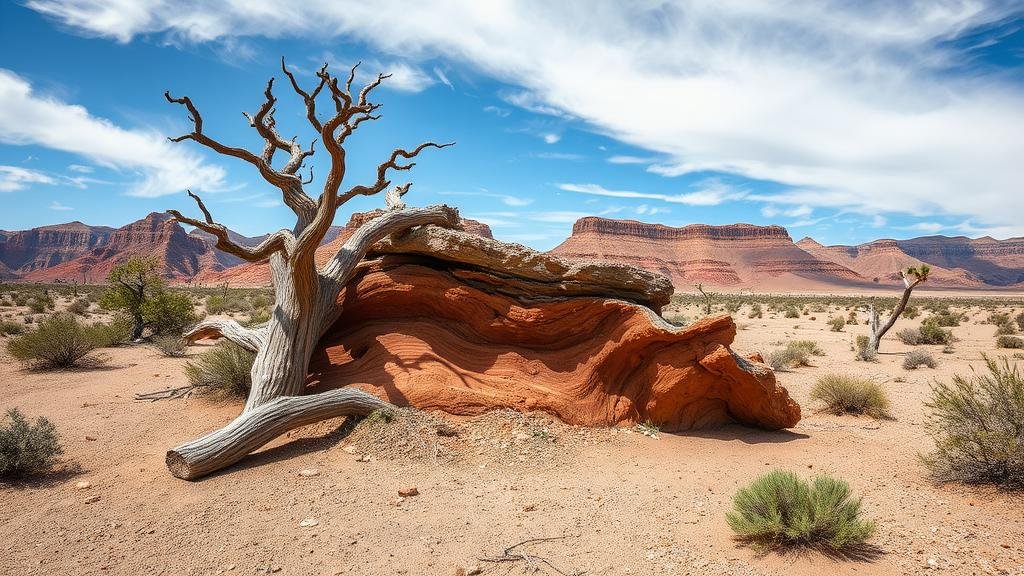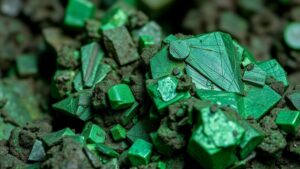Fossilized Forests: Hunting for Petrified Wood in Desert Landscapes
Fossilized Forests: Hunting for Petrified Wood in Desert Landscapes
Fossilized forests are mesmerizing landscapes that provide unique insight into our planets geological history. For rockhounds and mineral collectors, hunting for petrified wood in desert environments presents both an exciting challenge and a valuable opportunity to uncover ancient specimens. This article will explore the formation of petrified wood, key locations for collection, and practical tips to enhance your fossil hunting adventures.
The Science of Petrified Wood
Petrified wood is the result of a complex geological process known as permineralization. During this process, organic plant material, typically wood, is buried under sediment and subjected to heat and pressure over millions of years. Mineral-rich groundwater permeates the wood fibers, replacing the organic material with minerals such as silica, calcite, or iron. As a result, the wood is transformed into stone, often preserving the original structure and even cellular components.
Scientists have documented that the oldest known petrified forests date back to the late Paleozoic era, approximately 300 million years ago. most extensive fossilized tree stumps can be found in formations such as the Blue Mesa and Rainbow Forest in Petrified Forest National Park, Arizona, which showcases the rich diversity of species that once thrived on Earth.
Key Locations for Petrified Wood Hunting
Desert landscapes across the United States are prime locations for hunting petrified wood. Below are some notable sites where enthusiasts can find impressive specimens:
- Petrified Forest National Park, Arizona: Renowned for its stunning vistas, this park offers numerous trails leading to colorful petrified logs, some exceeding 200 million years in age.
- Painted Desert, Arizona: Featuring vibrant layers of sediment, collectors can frequently find fossilized wood and other mineral-rich specimens.
- Green River Formation, Wyoming: Known for its significant fossil finds, this location also contains areas with petrified wood deposits from the Eocene epoch.
- New Mexicos El Malpais National Monument: Characterized by volcanic landscapes, this area is known for its scenic beauty and abundant petrified wood sites.
- Californias Mojave Desert: Home to numerous fossilized wood deposits, enthusiasts can often find well-preserved logs in disused quarries.
Practical Tips for Collectors
While collecting petrified wood can be an exhilarating experience, it is essential to approach this activity responsibly. Here are some practical tips for successful and ethical fossil hunting:
- Research Regulations: Before venturing out, check local laws and regulations. Collecting petrified wood can be restricted or prohibited in certain areas, particularly in national parks and protected lands.
- Use the Right Gear: Equip yourself with sturdy hiking boots, gloves, and tools like chisels and hammers for breaking apart layers of sediment. A field guide to local flora and geology may also prove invaluable.
- Travel with a Companion: Safety is paramount in remote desert locations. Always travel with someone who can help in case of emergencies.
- Examine Your Finds Thoroughly: When you find a specimen, take time to inspect it. Look for distinctive patterns and colors that indicate high-quality petrified wood.
- Clean and Preserve: Once collected, clean your finds gently to remove any dirt. Avoid harsh chemicals that could damage the woods structure. Consider applying a protective sealant for display purposes.
Real-World Applications and Value
Petrified wood is not only an exciting collectible but can also serve various functional and aesthetic purposes. In the realm of art and design, polished slabs of petrified wood are used in tabletops, coasters, and decorative items. Also, petrified wood has immense educational value. Museums often feature these specimens in displays that illustrate terrestrial ecosystems and the Earths geological history.
Actionable Takeaways
To wrap up, hunting for petrified wood in desert landscapes offers rockhounds and mineral collectors a unique blend of adventure and education. By understanding the origins of petrified wood, knowing the best collection sites, and following ethical practices, enthusiasts can appreciate and preserve these ancient treasures. Always remember to respect the land and its regulations to ensure that future generations can also enjoy the wonder of fossilized forests.



